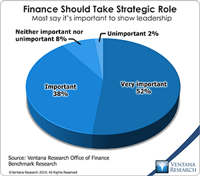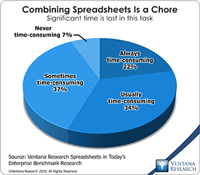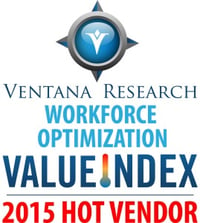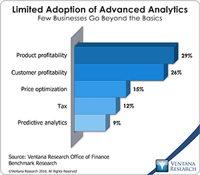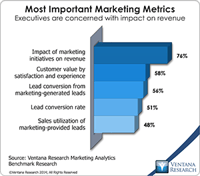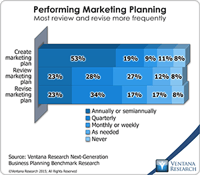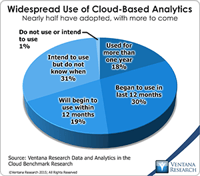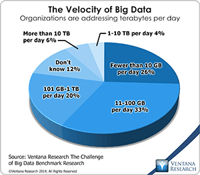Like many other industry observers I’ve heard overblown claims for information technology for decades. However, I’ve also observed that – eventually – reality catches up with vision. Finance and accounting departments are particularly resistant to change, yet because almost no corporations use adding machines or typewriters any more, it’s clear that transformative change can happen. Nonetheless, because users of business computing systems are inundated with “it’s better than ever” promotions by...
Read More
Topics:
Social Media,
Supply Chain Performance,
Human Capital,
Mobile Technology,
Office of Finance,
Operational Performance,
Business Analytics,
Business Collaboration,
Business Intelligence,
Business Performance,
Cloud Computing,
Financial Performance
Ventana Research coined the term “enterprise spreadsheet” in 2004 to describe a variety of software applications that add a desktop spreadsheet’s user interface (usually that of Microsoft Excel) to components that address the issues that arise when desktop spreadsheets are used in repetitive, collaborative enterprise processes. Enterprise spreadsheets are designed to provide the best of both worlds in that they offer the ease of use and flexibility of desktop spreadsheets while overcoming their...
Read More
Topics:
Sales Performance,
Supply Chain Performance,
Office of Finance,
Customer Performance,
Operational Performance,
Analytics,
Business Analytics,
Business Intelligence,
Business Performance,
Customer & Contact Center,
Financial Performance,
Information Management,
Financial Performance Management (FPM)
Verint is an established vendor of workforce optimization products that was the top-ranked vendor in our 2015 Workforce optimization Value Index. However, like many other large vendors in this category, its product portfolio and capabilities extend beyond workforce optimization; indeed, from a glance at its home page it is not immediately obvious that workforce optimization is a main part of its portfolio. The portfolio includes actionable intelligence, customer engagement optimization,...
Read More
Topics:
Customer Experience,
Customer Performance,
Operational Performance,
Call Center
Vendavo is a vendor of business-to-business (B2B) price and revenue optimization software, which I have written about. A major focus of the conference sessions this year at the company’s annual user group meeting was on practical approaches to successful price optimization initiatives. While this category of software has been achieving increasing acceptance, penetration is still limited in the B2B segment, which includes, for example, industrial goods and services.
Read More
Topics:
Big Data,
Sales Performance,
Customer Performance,
Operational Performance,
Business Analytics,
Business Performance,
Financial Performance,
Vendavo, price, pricing, optimization, revenue, cu
It often seems to business-to-business (B2B) marketers as if the only people who understand them are other B2B marketers. They feel that salespeople don’t get what they do day-to-day, that friends and family don’t understand what they do for a living, and most of all that the executives to whom they report have no interest in what they do – that is, until the last day of the quarter. Then they require that B2B marketers deliver positive, lead-generating and revenue-producing results in reports...
Read More
Topics:
Big Data,
Sales Performance,
Operational Performance,
Analytics,
Business Analytics,
Business Collaboration,
Business Intelligence,
Business Performance,
Cloud Computing,
Operational Intelligence,
Hive9 Marketing Performance Management
The blockchain distributed database was invented to create the peer-to-peer digital cash called bitcoin in 2008. Although the future potential of bitcoin and other cryptocurrencies has been debated, the distributed ledger structure using a blockchain database that supports bitcoin is likely to be adopted for a range of commercial and governmental purposes. Distributed ledgers are a secure and transparent way to digitally track the ownership of assets while enabling faster transaction speeds and...
Read More
Topics:
Sales Performance,
Supply Chain Performance,
Customer Performance,
Operational Performance,
Business Performance,
Financial Performance,
Uncategorized,
blockchain, distributed ledger, DLT, ERP, SCM, sup
As global business increases competitive pressures, marketing departments face new challenges. They must anticipate and respond to frequently changing customer preferences and produce effective programs and campaigns to attract them. In the online world where customers can jump instantly from one company to another, Marketing must develop new ways to catch and hold their attention. Doing this well requires systematic, flexible planning that begins with the CMO and engages the entire department...
Read More
Topics:
Sales Performance,
Customer Performance,
Operational Performance,
Financial Performance,
Uncategorized,
CMO
Cloud-based computing has become widespread, particularly in line-of-business applications from vendors such as Salesforce and SuccessFactors. Our benchmark research also suggests a rise in the acceptance of cloud-based analytics. We’ve seen the emergence and growth of cloud-only analytics vendors such as Domo and GoodData as well as cloud-based delivery by nearly all the on-premises analytics vendors. Almost half (48%) of organizations in our benchmark research on data and analytics in the...
Read More
Topics:
Sales Performance,
Supply Chain Performance,
Human Capital,
Business Intelligence, Business Analytics, Cloud,,
Customer Performance,
Operational Performance,
Business Analytics,
Business Intelligence,
Business Performance,
Cloud Computing,
Financial Performance,
Information Management,
Uncategorized
Information technology enables a data-driven management style that was not feasible until powerful, affordable computers became generally available. There’s no bright line marking when this became possible; the process is ongoing. People were using financial analytics long before ENIAC, the first general-purpose computer, appeared, but the metrics available were not especially timely, broadly applicable to day-to-day situations or comprehensive enough to inform most management decision-making....
Read More
Topics:
Big Data,
Sales Performance,
Office of Finance,
Customer Performance,
Operational Performance,
Business Analytics,
Business Performance,
Financial Performance,
Uncategorized
It’s widely agreed that customer experience is now the most important dynamic for business. Any organization that wants to retain loyal and even vocal customers should do everything possible to ensure and maintain customer satisfaction. Software companies, especially those that promise to provide CRM and effective interactions across any channel at any time, should be good examples of embracing the methods they prescribe for using their products. But do they?
Read More
Topics:
Sales Performance,
Supply Chain Performance,
Human Capital,
Customer Performance,
Operational Performance,
Business Performance,
Cloud Computing,
Uncategorized,
NetSuite, TribeHR, HCM, HR, HRMS, Customer Experie
